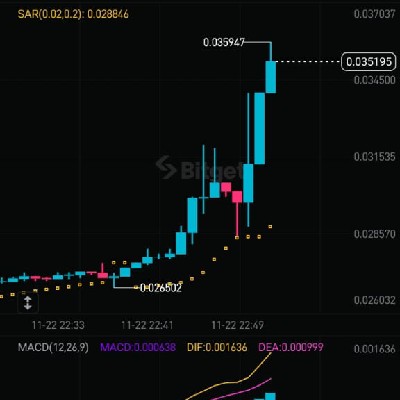![Treat DAO [new]の価格](https://img.bgstatic.com/multiLang/coinPriceLogo/0439a1ee1f33bb353fd6c855057b9cbd1710608700543.png)
Treat DAO [new]の価格TREAT
現在のTreat DAO [new]価格(JPY)
Treat DAO [new]の市場情報
Treat DAO [new] (TREAT)について
Understanding Cryptocurrency: An Introduction to Treat DAO Cryptocurrency has revolutionized the way we perceive and utilize money. One such emerging digital currency is Treat DAO. In this article, we will delve into the concept of cryptocurrency and explore the key features of Treat DAO in the Japanese language. Cryptocurrency, or 仮想通貨 (Kasōtsūka) in Japanese, refers to digital or virtual currencies that utilize cryptography for secure financial transactions. Unlike traditional currencies, cryptocurrencies are decentralized, meaning they operate on a peer-to-peer network without the involvement of intermediaries like banks or governments. Treat DAO is an innovative cryptocurrency that is gaining recognition among crypto enthusiasts. DAO stands for "Decentralized Autonomous Organization," which means it operates in a decentralized manner with the help of smart contracts. Treat DAO has the primary goal of empowering its community members by providing a decentralized marketplace for the creation, exchange, and promotion of digital assets. One of the key features of Treat DAO is its transparency. This cryptocurrency functions on the blockchain network, which is a digital ledger that records all transactions and ensures their accuracy. Each transaction made using Treat DAO is transparently recorded on the blockchain, making it more secure and reliable. Treat DAO also offers its users the opportunity to participate in governance decisions. This means that community members have a say in how the platform evolves and operates. Through a voting system, users can propose, debate, and vote on changes or improvements to the platform, ensuring democratic decision-making within the Treat DAO ecosystem. Another significant feature of Treat DAO is its security. Cryptocurrencies utilize advanced cryptographic techniques to secure transactions and user wallets. Treat DAO incorporates robust security measures to protect user funds and data, giving users peace of mind while engaging in transactions. Furthermore, Treat DAO emphasizes inclusivity and encourages collaboration. By removing intermediaries and empowering community members, Treat DAO aims to create a more accessible and equitable financial ecosystem. Users can create and exchange various digital assets, fostering innovation and creativity within the Treat DAO community. In conclusion, Treat DAO is an emerging cryptocurrency that is gaining popularity due to its decentralized nature, transparency, security, and inclusivity. By embracing the concept of a decentralized autonomous organization, Treat DAO empowers its community members and offers a platform for the creation and exchange of digital assets. As the cryptocurrency landscape continues to evolve, Treat DAO aims to play a significant role in shaping the future of finance.
Treat DAO [new]のAI分析レポート
Treat DAO [new]の価格予測
2026年のTREATの価格はどうなる?
+5%の年間成長率に基づくと、Treat DAO [new](TREAT)の価格は2026年には¥0.00に達すると予想されます。今年の予想価格に基づくと、Treat DAO [new]を投資して保有した場合の累積投資収益率は、2026年末には+5%に達すると予想されます。詳細については、2025年、2026年、2030〜2050年のTreat DAO [new]価格予測をご覧ください。2030年のTREATの価格はどうなる?
注目のキャンペーン
Treat DAO [new](TREAT)の購入方法

無料でBitgetアカウントを作成します

アカウントを認証する

TREATをJPYに交換
よくあるご質問
Treat DAO [new]の現在の価格はいくらですか?
Treat DAO [new]の24時間取引量は?
Treat DAO [new]の過去最高値はいくらですか?
BitgetでTreat DAO [new]を購入できますか?
Treat DAO [new]に投資して安定した収入を得ることはできますか?
Treat DAO [new]を最も安く購入できるのはどこですか?
今日の暗号資産価格
Treat DAO [new](TREAT)はどこで買えますか?
動画セクション - 素早く認証を終えて、素早く取引へ

Bitgetインサイト





Bitgetに新規上場された通貨の価格








